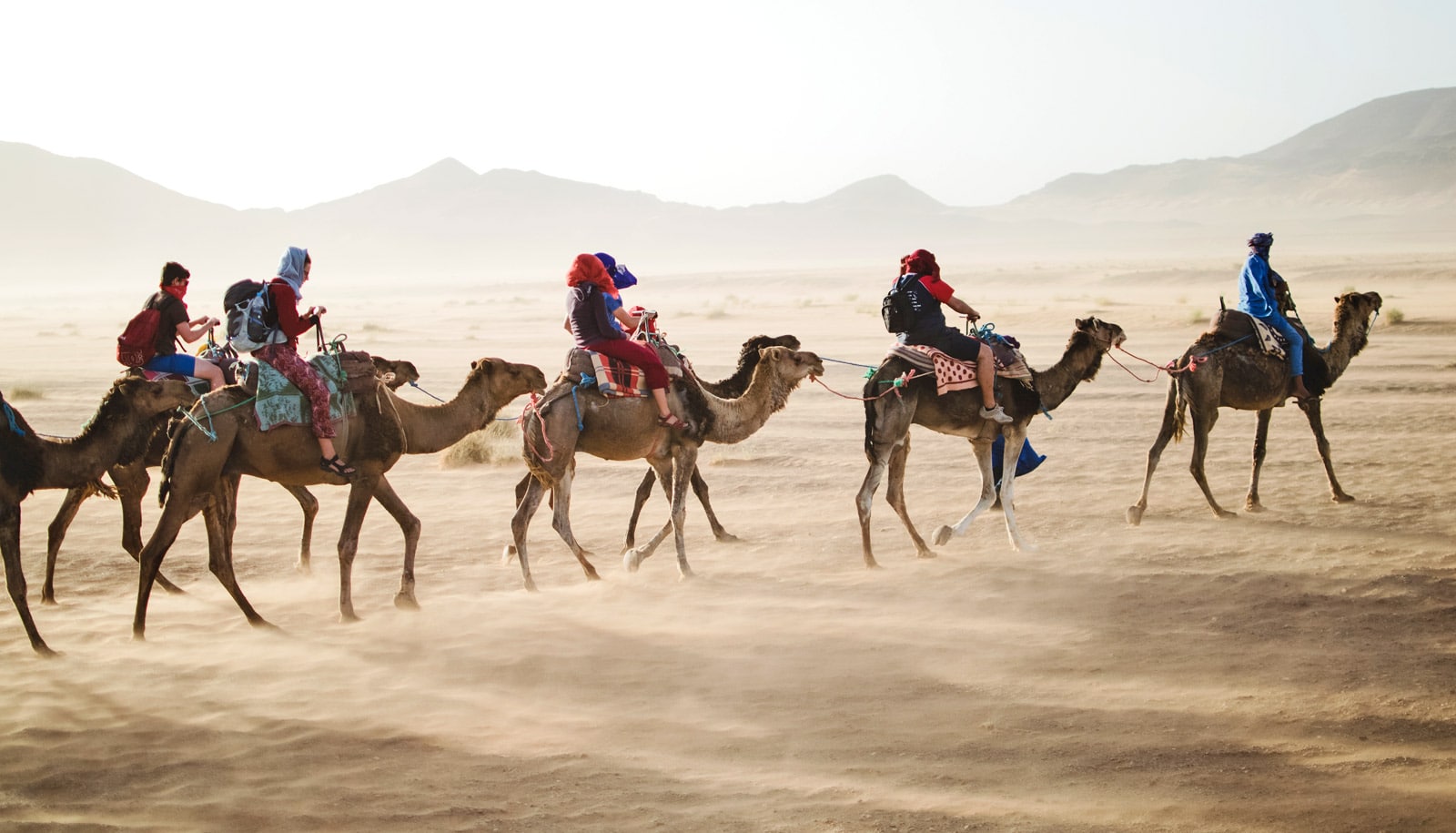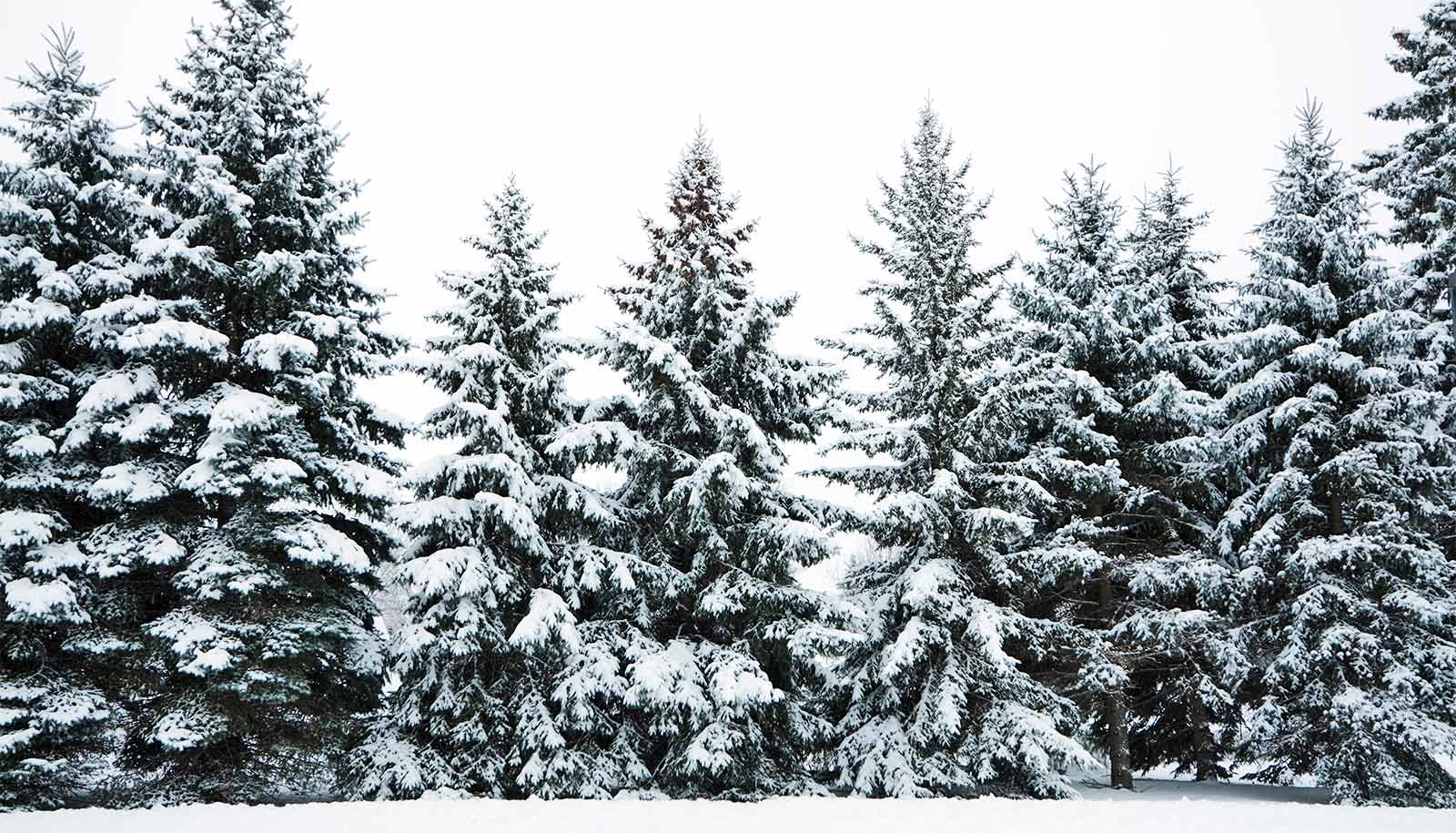Between 5,000 and 11,000 years ago, much higher levels of rain made a “Green Sahara.” The area was home to hunter-gathers who made their living off the animals and plants living in the region’s savannas and wooded grasslands.
“It was 10 times as wet as today,” says Jessica Tierney, associate professor of geosciences at the University of Arizona. Annual rainfall in the Sahara now ranges from about 4 inches to less than 1 inch (100 to 35 mm).
Although other research had already identified the existence of the Green Sahara period, Tierney and colleagues are the first to compile a continuous record of the region’s rainfall going back 25,000 years.
Archaeological evidence shows humans occupied much of the Sahara during the wet period, but left for about a thousand years around 8,000 years ago—the middle of the Green Sahara period.
This cave may hold clues to future climate change
Other investigators have suggested the Sahara became drier at the time people left, but the evidence was not conclusive, Tierney says.
As reported in the journal Scientific Advances, the new continuous rainfall record shows a thousand-year period about 8,000 years ago when the Sahara became drier. That drier period coincides with when people left. “It looks like this thousand-year dry period caused people to leave.
“What’s interesting is the people who came back after the dry period were different—most raised cattle. That dry period separates two different cultures. Our record provides a climate context for this change in occupation and lifestyle in the western Sahara.”
The researchers also used their rainfall record to suggest ways current climate models can better replicate the Sahara’s ancient climate and therefore improve projections of future climate.

Leaf wax clues
Researchers had long known the Sahara was much greener in the past, but how much of the Sahara was wetter and how much wetter was not well understood, Tierney says. Although scientists can learn about past climate by examining ancient lake sediments, in the Sahara the lakes dried up long ago and their sediments have blown away.
So, instead of lake sediments, researchers used cores of marine sediments taken off the coast of West Africa at four different sites. Because the cores were taken over a north-south distance of about 800 miles (1,300 km)—from offshore Cape Ghir, Morocco, to the northwestern corner of Mauritania—the cores revealed both the ancient rainfall patterns and the areal extent of the Green Sahara.
Rise and fall of city states tied to stormy weather
In terrestrial plants, the chemical composition of a leaf’s wax changes depending on how dry or wet the climate was when the plant was growing. Leaf wax also washes into the ocean and can be preserved in the marine sediments that are laid down year after year. “The waxes record the climate conditions on land,” Tierney says.
By analyzing the leaf wax from ancient marine sediments, the team determined the region’s past rainfall patterns and also gathered clues about what types of plants were growing.
Changing climate
The team also wanted to know whether the conditions on land interacted with the atmosphere to affect climate, because most of the current climate models don’t simulate the Green Sahara period well, she says.
The amount of solar radiation the Earth receives during the Northern Hemisphere summer depends on where the Earth’s “wobble,” known as precession, is in its 23,000-year cycle.
At the beginning of the Green Sahara, the Northern Hemisphere was closer to the sun during summer. Warmer summers strengthened the West African monsoon and delivered more rain. Toward the end of the Green Sahara, the Northern Hemisphere was farther from the sun and the West African monsoon was weaker.
There’s a feedback between vegetation, dust and rainfall, Tierney says. Right now the Sahara Desert is the planet’s biggest source of dust—but a vegetated Sahara would produce much less dust.
Coauthor Francesco Pausata added additional factors—more vegetation and less dust—to a climate model. His changes improved how well the model replicated the amount of rainfall during the Green Sahara and dry periods.
“Getting a better handle on the important influence of the vegetation and dust feedback will help us simulate future climate change in the Sahara and Sahel,” Tierney says.
Researchers from Columbia University and Stockholm University are coauthors of the study that was funded by the David and Lucile Packard Foundation, the National Science Foundation, and the Swedish Research Council.
Source: University of Arizona



